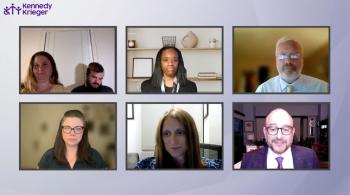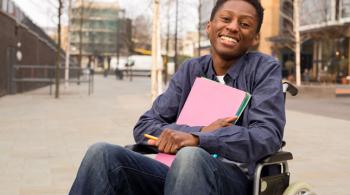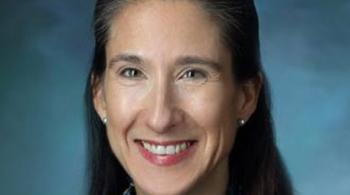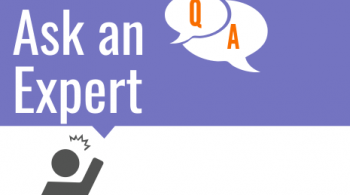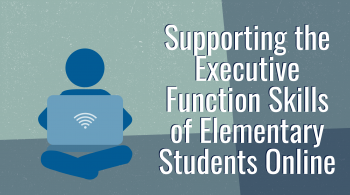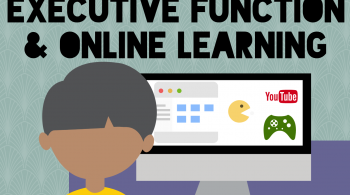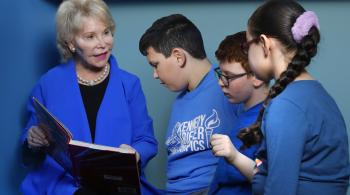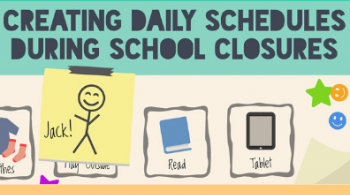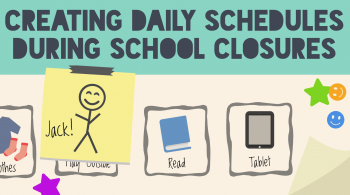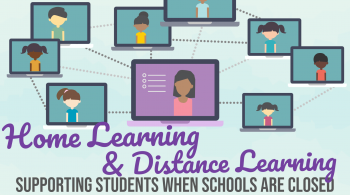11/6/16
Dr. Jennifer Reesman is a board certified clinical neuropsychologist at the Kennedy Krieger Institute and an assistant professor of psychiatry and behavioral sciences at the Johns Hopkins University School of Medicine. She is the founder and Director of the Deafness Related Evaluations and More (DREAM) Clinic at the Kennedy Krieger Institute.
Dr. Reesman spoke with Lisa Carey, The Center for Innovation and Leadership in Special Education Educational Consultant, about meeting the needs of Deaf and Hard of Hearing students in the classroom.
LC: What causes hearing loss in school-aged children?
JR: That’s a great question. There are three major circumstances that may lead to hearing loss in childhood and adolescence. First, since chemotherapy, radiation, and prolonged illnesses can impact hearing, if a student is coming back to the classroom after extended medical treatment for cancer or an acquired illness, it’s important to follow up and ensure that we know about their hearing status.
For children in early education programs, hearing changes are often due to infections. That can be something that is seen seasonally with allergies,colds and flus, or chronic ear infections. If a student is complaining of pain, or tugging at their ear, that’s a cause for concern. It’s a sign to head over to the nurse’s office and follow up on the student’s hearing status.
It’s important to note that nobody’s hearing ever gets better with time. Hearing and vision are our two senses that don’t tend to spontaneously improve. Instead, they tend to deteriorate slightly over time. In addition to normal hearing deterioration, many kids and teens today are exposed to noises that can damage hearing. For example, let’s say someone goes to a concert and they’re standing right next to the speakers - prolonged exposure to that level of sound can damage your hearing to the point that you might not have access to all of the sounds you were previously able to hear. Some people are surprised to learn that things many kids do to earn money, such as mowing the lawn, can negatively impact hearing if proper ear protection is not used. It’s important to remember that kids starting high school may not be able to hear as well as they once did.
LC: While teachers are used to vision screenings and considering if a student can’t see to copy notes, it seems that less attention is given to students’ hearing status. Is that because there are universal screeners given to young children tocatch issues before teachers need to be concerned?
JR: It’s important for educators to know that newborn hearing screening happens at birth. Infants who pass their newborn screening can still develop hearing loss overtime.. Any child with a progressive hearing loss - in which they were born with typical hearing and then progressively lost access to sounds – will pass their screening, but will still need to have their hearing status addressed by their teacher. If a teacher notices a child is not picking up on sounds, or is struggling when information is only presented with auditory cues and without a visual cue, that should signal a need for additional testing to rule out hearing loss.
LC: What are the signs that a student is hard of hearing or is experiencing hearing loss?
JR: There is unfortunately no universal method to determine if a student is experiencing hearing loss, which is why collaboration between the school, family, and medical professionals can be so advantageous. There are so many of us who don’t realize that we depend on our other senses, like vision, to cue us to sounds. You may have a student with a hearing loss who appears to respond appropriately, but they really are just good at integrating their use of visual cues. For example, a student may nod when asked if they understand. In reality, the child may not have actually heard what was said, but know they’re supposed to nod when it seems they are asked a question.
LC: So if a student seems lost or confused, is it good practice to rule out that they aren’t having trouble hearing the directions and instruction?
JR: Yes, that would be a good idea. Alerting the school nurse and the family of your concerns is a good first step.
LC: Do all students who are Hard of Hearing require speech services?
JR: Speech and language pathologists (SLP) and speech and language therapists are often crucial members of a student’s educational programing when they are Deaf, Hard of Hearing, or have experienced a hearing loss. However, not all students have goals related to articulation. A student’s speech services treatment depends largely on when their hearing loss occurred. If a student experienced hearing loss at an older age, for example, their speech and articulation may not be something that they need to focus on. They may instead work on receptive language, such as interpretation of cues and lip reading. Educationally, I think the most important thing teachers can look out for is how hearing loss impacts a student’s reading and language skills. For example, students who communicate well using American Sign Language (ASL) may not be working on goals with an SLP, or they may be working on goals that aren’t related to expressive speech.
LC: What are some basic strategies teachers can incorporate into their classrooms to support students who are hard of hearing?
JR: Well, number one--and I’m sure you’ll agree--is paying close attention to good Universal Design for Learning (UDL) principles. The UDL guidelines tell teachers to consider multiple means of representation. For example, using captions for any media we use as a teaching tool. Even for the youngest children, using captions can support early literacy skills. Teachers should also consider how Deaf and Hard of Hearing students will interact with the content. Do you have options for your students to share what they know?
The other important thing teachers can do is to pay attention to the acoustical environment of their classrooms. If you’re lucky enough to have access to an educational audiologist, ask them to come into your room with an audiometer when you’re teaching to look at the noise level.
Making sure you can use any assistive technology and are comfortable with it will greatly help students. FM systems are wonderful tools that will amplify your voice and go directly to a hearing aid. If your student is using this type of system, make sure that you receive training to ensure you use it correctly and without hesitation. Also know the limitations of technologies. For example, the same FM system that works so well for direct instruction won’t be as helpful for group discussion. You may want to use more environmental seating options.
This brings me to the thing that most teachers are really great at doing naturally -making sure they seat students where they need to be. With students who are Deaf or Hard of Hearing, ensuring visual access to learning materials and cues is important. A U-shaped seating arrangement is fantastic for providing visual access to all communicators, and the shape works as a natural environment that keeps the sounds “in." If you are thinking of decorating a room, consider how you’re going to prevent ambient sounds and echoes from making auditory discrimination difficult. Have rugs, tennis balls on chairs, and other sound dampening design items.
Ensuring students are clear on who is speaking and preventing them from talking over one another is also helpful. That’s something a lot of teachers are terrific at - developing turn-taking skills. Create visual and physical cues for students to know whose turn it is to speak; items like talking sticks can be helpful. For students using an interpreter, creating a clearly delineated way of establishing turn-taking and knowing who is speaking is of utmost importance.
Many teenagers will say they often stop asking people for repetition of directions because they’re told, “Oh, never mind, it wasn’t important.” When a student does ask for clarification or repetition, it can be helpful to use this as an opportunity to have another student share the directions. In that way, you’ve reinforced the directions for other students, you’ve modeled providing multiple opportunities for gathering information, and you’ve made sure the information was understood and accessed.
LC: That is a great example of how to offer supports to multiple students at once and build a classroom community that assists each other by building off everyone’s strengths and abilities. Is there anything else you’d like teachers to consider?
JR: One last thing to consider is that you might teach hearing children of Deaf or Hard of Hearing parents. We refer to these children as CODAs, Children of Deaf Adults. It’s important to be sensitive to the communication needs of these students’ parents. Communication by email or through a sign language interpreter for parent conferences will allow parents who are Deaf or Hard of Hearing to fully participate as partners in their child’s education. Make sure you know how parents prefer to communicate.

